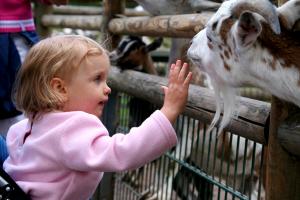- Welcome
- About Life
- National Geographic and Life
- Teacher Resources
- Customizing Life to your course hours
- Interactive Whiteboard Video Tutorial
- Student's Book and Workbook Audio
- CEFR correlations
- Audioscripts (Word)
- Reading Texts (Word)
- Videoscripts (Word)
- Business Writing Worksheets
- Communicative Worksheets
- Extra Practice Activities
- Life Grammar Practice Worksheets
- Multilingual and monolingual word lists
- Ready-made Lessons
- Split editions teacher's book references
- Student's Book Answer Keys
- Web research for Life
- Video
- Test Centre
- Student Zone
The first year of life

A newborn baby can see, hear and feel. By the age of five, a child can talk, ride a bike and invent imaginary friends. How does this development happen? We don’t understand the way language, thinking and planning develop very well. Now scientists are using new technology to ‘see’ into children’s brains. And they are discovering new information about the way a baby’s brain develops.
A study in 2010 showed that the experiences a child has in their first few years affect the development of the brain. It showed that children who received more attention often had higher IQs. The brain of a newborn baby has nearly a hundred billion neurons. This is the same number as an adult’s brain. As they grow, a baby receives information through the senses of sight, hearing, smell, taste and touch. This information creates connections between different parts of the brain. At the age of three, there are a hundred trillion connections.
One experiment looked at images of babies’ brains while they were listening to different sounds. The sounds were in different sequences. For example, one sequence was mu-ba-ba. This is the pattern ‘A-B-B’. Another sequence was mu-ba-ge. This is the pattern ‘A-B-C’. The images showed that the part of the brain responsible for speech was more active during ‘A-B-B’ patterns. This shows that babies can tell the difference between different patterns. This experiment is interesting because sequences of words are important to grammar and meaning. Compare two sentences with the same words in a different order: ‘John killed the bear’ is very different from ‘The bear killed John.’ So babies are starting to learn grammatical rules from the beginning of life.
Researchers also know that babies need to hear a lot of language in order to understand grammar rules. But there is a big difference between listening to television, audio books or the internet, and interacting with people. One study compared two groups of nine-month-old American babies. One group watched videos of Mandarin Chinese sounds. In the other group, people spoke the same sounds to the babies. The test results showed that the second group could recognise different sounds, however the first group learned nothing. The scientist, Patricia Kuhl, said this result was very surprising. It suggests that social experience is essential to successful brain development in babies.
Glossary:
neuron (n) a type of cell that carries messages from your brain to other parts of your body
Keywords:
feel
(v) to notice something that is near you or is happening to you
hear
(v) to be aware of a sound in your ears
hearing
(n) the ability to hear
listening
(n) the act of giving something your attention using your ears
see
(v) to notice things with your eyes
sight
(n) the ability to see
smell
(v) to notice something with your nose; (n) the ability to notice something with your nose
speech
(n) the ability to speak
taste
(v) to be able to experience the flavour of something with your tongue; (n) the ability to taste something
touch
(v) to feel something by putting your hand or finger on it; (n) the ability to feel something with your hand or finger
Reading comprehension:
Read the article and choose the correct option.
compare the brains of adults and children.
describe how a new-born baby’s brain works.
explain new studies into the development of babies’ brains.
2. According to the article, which statement is true?
Children who hear different languages develop differently.
Experiments focusing on language have given researchers new information.
The development of language is the easiest thing to study in babies.
Read the article again and choose the correct option.
most aspects of child development are understood quite well.
some five-year-olds have imaginary friends.
children use technology more these days.
4. New technology has revealed …
information about child development.
that babies see differently from young children.
what a new-born child’s brain looks like.
5. Which statement is supported by the second paragraph?
Adult brains have more neurons than new-born babies’ brains.
Babies and three-year-olds have the same number of neurons.
Early experiences have an effect on brain development.
6. According to the second paragraph, what can affect IQ?
being with adults a lot
connecting with other babies
paying attention to a baby
7. Which statement is true?
A pattern like ‘A-B-C’ is easier to understand.
Babies’ brains recognise different sound patterns.
It’s not known which area of a baby’s brain processes speech.
8. Experiments with sound patterns …
demonstrate that babies understand different words.
show that babies can begin to understand grammar.
suggest that sequence is relevant to meaning.
9. What did the study described in the last paragraph do?
compare the effects of different languages
divide babies into two groups with different treatment
investigate if babies can learn Chinese
10. What is the main conclusion from the study described in the last paragraph?
Babies can understand television at the age of nine months.
Social interaction has a big influence on the brain.
Watching videos is a good way to develop a child’s brain.
Find out more:
Which is your favourite photo?